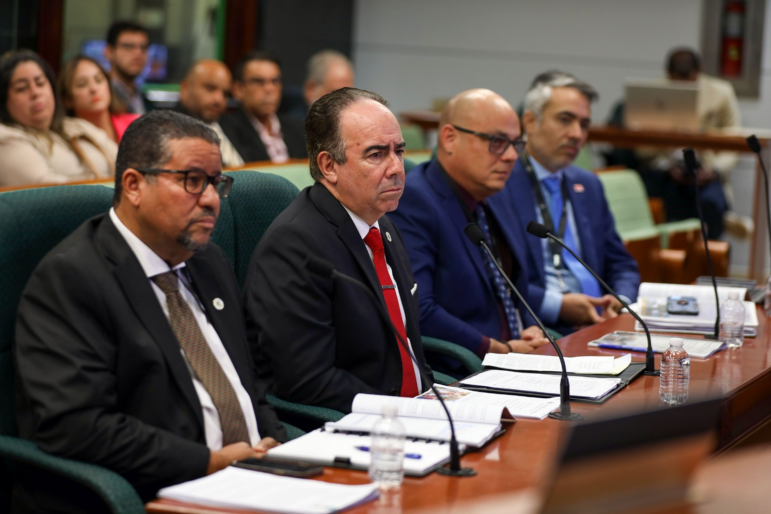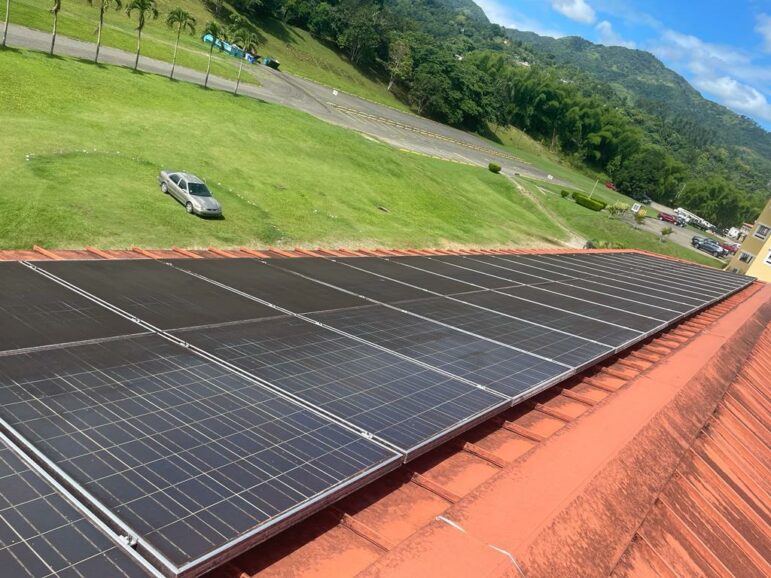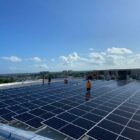For fiscal year 2022-2023, the University of Puerto Rico (UPR) identified $34,501,712 for the electricity costs of its 11 campuses, equivalent to 3% of the certified budget of the institution. However, as we close out the fiscal year, the estimated total cost for this service rose to $44,171,028. Adding to the difference of about $10 million more for this payment, some facilities, such as Río Piedras and Cayey, experienced even more expenses in this line due to extended outages or unexpected electrical substation repairs.
Of the 11 campuses, Río Piedras suffered the largest increase in electricity spending, with a shortfall of more than $4 million of the money budgeted for this service. Mayagüez follows with $1,349,801 in expenses above the $6,690,199 budgeted for electricity bills; and Humacao, where $1,400,000 was budgeted, but expenses increased by $1,344,633 to a total of $2.8 million.
The Bayamón, Carolina, Ciencias Médicas, Arecibo, Cayey, Aguadilla and Ponce campuses had to identify between $170 and $700,000 more than budgeted to pay for electricity. The Utuado Campus had the least imbalance in its checkbook in this line, with an annual bill increase of $9,000.
The president of the UPR, Luis A. Ferrao Delgado, acknowledged during a hearing of the House of Representatives Committee on Finance and Budget that the “extraordinary increases, such as electricity, have left the units of the system without room for maneuver” and announced that the institution would operate with a $27 million shortfall if the funding allocations will not be increased next fiscal year. The campuses where the largest shortages are expected for this fiscal year are Río Piedras, Humacao, Carolina, Ciencias Médicas and Cayey.

Photo by Tammy Olivencia | House of Representatives
He budget UPR overall — down 48% over the past six years — is $1,320,564,000 for fiscal year 2023-2024.
What do enclosures do to save energy?
From June 2021 – when the privatization company LUMA started managing energy distribution – until June 2022, the Energy Bureau approved five consecutive increases in the electricity rate. This fee is reviewed quarterly to account for factors such as inflation or changes in fossil fuel prices. One of the alternatives that all units of the UPR system have tried to save energy is replacing lighting fixtures and air conditioning equipment with more efficient ones and installing solar panel systems in some buildings.
In the Medical Sciences Campus (RCM), they replaced the lighting with LED technology, as well as the air conditioning units and five coolers with high-efficiency ones. In addition, the facility has a series of regulators in the electrical room of the Guillermo Arbona Irizarry building that help conserve energy. In the same building, they installed motion sensors for the hallway lighting and variable speed drives to control the fans of the air conditioners. The library has solar panels.
Other ongoing proposals to save energy include installing solar-powered tables, continuing the replacement of light fixtures, and instructing employees to turn off lights and equipment when they finish their shift. In addition, the RCM management is considering conducting an energy utilization study.

photo provided
As in the RCM, in the Ponce Campus they have replaced air conditioning units and lighting with LED technology and a daily check is made to ensure that the units are turned off. Among plans to increase energy savings, the Ponce campus administration is considering installing an automated lighting and air conditioning control system for the academic building, as well as installing a renewable energy system with funds from the Development Block Grant Community Mitigation Fund (CDBG-MIT).
In 2012 the Utuado Campus received a $100,000 investment to install a solar energy system in the library, and more recentlya grant from the non-profit association Second nature to transfer the operation of the campus to solar energy. Like other units of the UPR system, they also installed LED lighting and motion sensors in various areas in Utuado.

Photo provided by the University of Puerto Rico, Utuado Campus
The Cayey Campus also received a scholarship of $2.6 million from the Federal Department of Education to install solar panels in the Emergency Operations Center, as well as electrical generators. NASTY end of Februaryor The campus administration had to incur the unexpected cost of $38,305 for a failure of an electrical substation on campus, and these costs are not final because they still have to buy a transformer costing about $379,000, with no installation. Although the Security Building has solar panels, the system does not work.
In April, the operation of the Río Piedras Campus was also interrupted by an electrical outage that led to costs for cleaning and mold removal in several buildings after service was restored. On this issue, the representative of undergraduate students for the Governing Board (JG) of the UPR, Delvin Caraballo, emphasized in a missive told that agency that restoring the electrical systems to the conditions they were in prior to the hurricanes in the Rio de Janeiro area could cost $90 million. He memorial The budget recently presented to the House of Representatives warns that only 15% of the institution’s general fund is available to pay for infrastructure maintenance, including major maintenance and reconstruction of critical infrastructure, such as electrical substations.

Photo by Norenid Feliciano | Center for Investigative Journalism
The administration of that facility indicated that the replacement of the main substation, the central plant and the substations of 78 buildings is underway, in addition to the integration of cogeneration units that will serve as a redundancy for the main substation, but did not specify when these replacements will be completed are . It also plans to install photovoltaic systems in 21 buildings. At the moment, all areas of the hall are illuminated with LED technology and 37 tables with solar panels have been installed.
For its part, the Bayamón Campus plans to build a micro-electrical network with the surrounding schools, and to replace the high-intensity luminaire with LED. The UPR’s central administration has also not specified when or to which entity the proposal for the Bayamon campus microgrid will be submitted, or whether it will be established with neighboring public schools.
On the Carolina Campus, there is a building that works with a 405 photovoltaic system. plates solar panels and panels are expected to be installed in a further four buildings in the next six months. As with Medical Sciences, they changed all their lighting to LED and the cooling systems of the air conditioners. However, the Rector José I. Meza Pereira, warned since October 2020 in the presentation of the energy plan for the Carolingian campus that “90 percent of the budget allocated for service and maintenance of the physical plant is for the payment of [la factura] of electrical energy”.
Solar panels in the Carolina Campus.
Photo provided by the University of Puerto Rico, Carolina Campus
On the Humacao Campus, LED lighting and energy-efficient equipment have been installed in the bathrooms. In addition, the director of the police department’s press and communications office, Ingrid Vázquez, said that in April she submitted a proposal to the Housing Department to get funding from the Infrastructure Mitigation Program (INFRA-MIT) to replace the air conditioners with ones they save energy.
Solar panels have been installed in Arecibo, the building that houses the Center for Preschool Development and the labs for physics and chemistry. For example, solar spots have been placed in various places, traditional lighting has been replaced by LED lighting and solar panels have been installed in the administration building.
In Mayagüez, the chemical engineering building has a lab with a solar panel and battery system. As with the Humacao Campus, the UPRM administration submitted a cogeneration proposal for CDBG-MIT funds in late April, which would reduce energy costs by 50%.







Be First to Comment